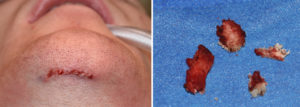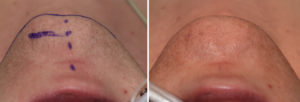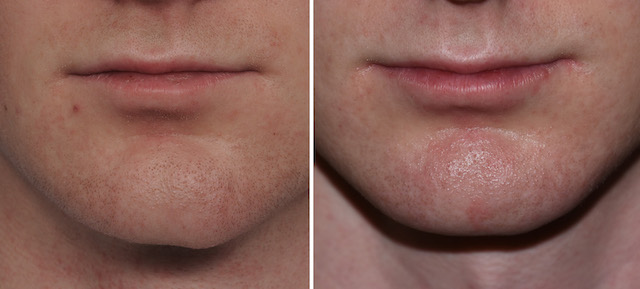Background: The chin is embryologically formed in humans by the union of the paired brachial arches that merge and become one in the middle. Most take the chin for granted because we all have them, some more than others. Humans chins are unique because no other animal has them including primates. Even our Neanderthal ancestors did not have chins. No one can biologically explain why humans have chins or what role they play.
But from an aesthetic facial standpoint, however, the chin is greatly valued because of its lower facial prominence. While there is great variability in the shape of chins and in their gender characteristics, one physical feature of the chin that is valued on everyone is symmetry. An asymmetric chin is a very easily seen and causes as much concern as asymmetry of another midline facial feature, the nose.
Chin asymmetries most commonly occur as part of an overall developmental jaw asymmetry and is seen as a deviation to one side or the other. Isolated chin asymmetries are different as the jawbone behind it is symmetric. Isolated chin asymmetries occur as either differences in vertical height or horizontal projection between the two sides….and often occur together. The vertical component of chin height are frequently the most bothersome to patients because of their frontal visibility.
Case Study: This male presented with a combined vertical and horizontal chin asymmetry.



Case Highlights:
1) Chin asymmetries are common and are almost always have a bony basis.
2) Chin bone asymmetries that have an excessive length on one side can be reduced by an inferior border shave technique.
3) Inferior border shaves of the chin can be done directly through a submental skin incision.
Dr. Barry Eppley
Indianapolis, Indiana




